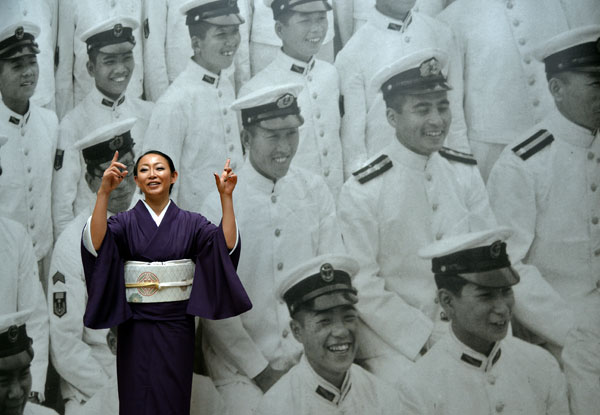In Rome, Ken Domon, Japan's master of realism, gets first overseas exhibition
By Angus Mackinnon In Rome Agence France Presse ( China Daily ) Updated: 2016-06-25 07:39:49
Hiroshima turning point
"We were always afraid of making a mistake, knowing it could lead to a wallop on the back or a clout round the head."
Another former student, Ushio Kido, described his former master as "a very sensitive person."
"He loved human beings, especially children," Kido says.
Children feature in many of the most striking images on display, from the small boy peeing in the street from a 1952-54 series to the laughing toddler who features alongside his equally joyous but disfigured father in "the Otani family" from his Hiroshima collection.
A small selection of the 7,800 images Domon took in and around Hiroshima in the Fall of 1957 form the heart of the collection in Rome and have been symbolically placed in a low-lit room in the centre of the riverside museum.
Twelve years after the first military use of the atomic bomb, the scars were still evident on the city's infrastructure and in the disfigured and reconstructed limbs and faces that Domon was to be severely criticised for recording, often weeping as he did so, according to his own account.
"People said it was too shocking, and he was attacked for capturing the reality of the survivors' situation," says Menegazza.
"But for him it was a moment of change in his life. He recorded in his notebook the exact time at which he arrived in Hiroshima for the first time and for him it was one from which there was no turning back.
"He realised that up until that moment he had chosen to ignore or had been afraid of what Hiroshima meant. And that pushed him deeper into realism."
- Fidel Castro exhibition held in Beijing
- Photo exhibition opens in Serbia ahead of President Xi's visit
- Exhibition 'Emperors' Treasures: Chinese Art From Taipei Palace Museum' held in US
- Chinese Painting and Calligraphy Exhibition held in Hong Kong
- 'Beautiful China, Beautiful Poland' photo exhibition and book fair launch in Warsaw
|
|
|
|
|
|
|
|


























 Raymond Zhou:
Raymond Zhou: Pauline D Loh:
Pauline D Loh: Hot Pot
Hot Pot Eco China
Eco China China Dream
China Dream China Face
China Face






